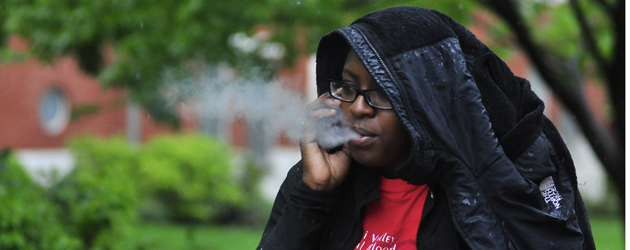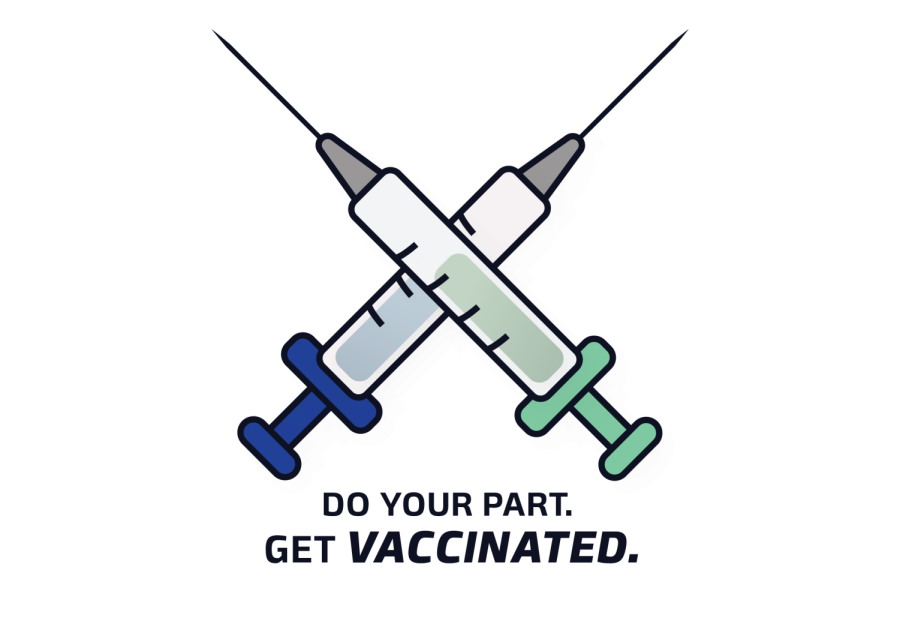
As a senior at Saint Louis University, Andrew Gelstein often finds himself feeling stressed and anxious after his classes. Gelstein lights up more than 15 cigarettes a day while on campus to get a sense of relief.
“It is something I started freshman year, and at first I did it socially. Then I did it because it gave me something to do, and now I smoke so that I am not stressed after class,” Gelstein said. “I wish I could quit, but no one wants to quit by themselves, and it is so easy to go outside and light up on campus.”
More than 500 colleges across the nation have committed to making smoking on campus more difficult for students like Gelstein by banning the activity completely. Washington University in St. Louis is smoke free, the University of Missouri-Columbia has recently committed to going entirely smoke free by 2014 and other universities in the area are currently revising their smoking policies.
“It has been a long evolution. We have worked to make the campus a healthier environment, and studies have shown that a healthy work environment can lead to a healthier work force,” Associate Director of the MU News Bureau Christian Basi said.
Currently, SLU and Webster University are the only universities in St. Louis that have not begun a revision of their current smoking policies. SLU’s current policy prohibits smoking within all non-residential, University-owned and -leased buildings, on the Medical Center and on sidewalks within 20 feet of building entrances.
“The conversations that we have had in the past to change our policy have been primarily based on student interest from year to year,” Vice President for Facilities Management and Civic Affairs Kathleen Brady said. “I don’t know how effective a ban would be for SLU because it would be difficult to enforce.”
The SLU Medical Center is currently smoke free, and Brady said that enforcement of that policy is proving to be difficult, as cigarette butts are often found outside by the buildings.
“No student wants to walk behind someone smoking; the good thing is that I don’t see many students smoking on campus,” junior Matt Spector said. “There aren’t many ash trays on campus, and so students litter their cigarettes all over.”
The student interest to make the entire campus smoke free resides largely in Smoke Free SLU, a student group created in 2007. The goal of the group is to “make the campus healthier by eliminating or greatly reducing secondhand smoke exposure through a comprehensive smoke-free campus policy.”
President of Smoke Free SLU, Jean Puccinelli, said that more information needs to be gathered from the SLU community regarding smoking.
“The current enforcement plan at SLU doesn’t work, and it has been a constant struggle to get SLU to go smoke free, but it has to keep going,” Puccinelli said.
Smoke Free SLU currently has 10 members, all of which are graduating, and is looking to increase their recruitment efforts for next year. Puccinelli said that she is looking for someone to lead the group next year. The group did not file for any funding from the Student Government Association during the annual funding process because of this transition in leadership.
“We need to get more students involved and thinking about the issue that is smoking on this campus,” Puccinelli said.
In the past, Smoke Free SLU has spoken to administrators, SGA and University President Lawrence Biondi, S.J. about surveys that they collected from students. According to Puccinelli, the surveys have shown that majority of the students and faculty were in favor of a smoke-free campus. However, the administration wanted the group to conduct another survey and to gather more information on other colleges’ smoking policies.
Jared Opsal, a graduate research assistant with the SLU School of Public Health, works with colleges around St. Louis to help with revising and improving their smoking policies.
“I think SLU has a lot to learn from these trends around the nation; breathing in that secondhand smoke on campus does have an effect on us,” Opsal said.
According to the U.S. Department of Health and Human Services, secondhand smoke contains chemicals known to be toxic or cancer-causing, and the concentration of these chemicals are higher in secondhand smoke than in smoke inhaled by smokers. SLU professor in the School of Public Health, Patricia Lindsey, who works closely with Smoke Free SLU, said that smoke-free campuses are becoming trends around the nation for a reason.
“This is a health issue, and I know what smoking can do for your health. One of my biggest passions is to get people to stop smoking,” Lindsey said. “The goal is to make it difficult for them to smoke, and if we ban it on campus, this will make it easier for them to eventually stop smoking.”
Lindsey believes that all college campuses in St. Louis will be smoke free by 2012, and SLU may be the last to switch policies.
“The way it is looking now, SLU will be the last university in the city to go smoke free. It will be difficult to find a policy that works for SLU, but it just takes the administration working with us, and now is the time for a change,” Lindsey said.
Some administrators have said that SLU’s campus environment could make enforcing a complete smoking ban difficult. According to Brady, a ban may push smokers to the edges of campus, which could possibly create additional safety concerns.
“If we had a ban, everyone would congregate to the parking lots and the sidewalks and create even more issues,” Brady said. “We need to gather more feedback from the community, and it all begins with the student interest for a change in policy.”
















Jane • May 6, 2011 at 12:12 am
UMSL recently banned smoking only problem is they don’t enforce it so people blatantly keep smoking right in front of each building.
Making a ban is just one step. You have to enforce it to make it work.
Jared • Aug 3, 2011 at 2:38 pm
UMSL’s ban did not go into effect until July 1, 2011. So, that is why you continued to see people smoking on their campus. However, please let me know if people continue to smoke on campus now that the ban has taken effect. As a side note, it usually takes a few months for people to adjust after a new policy has been implemented.